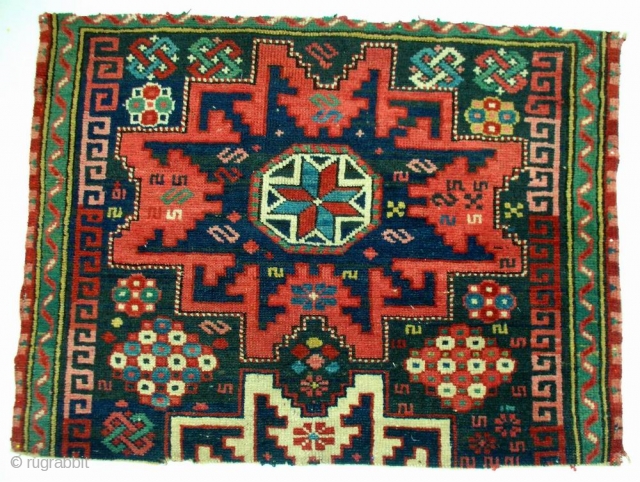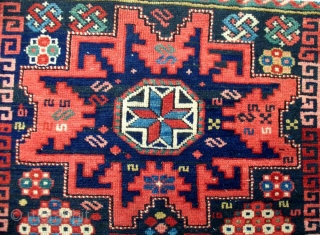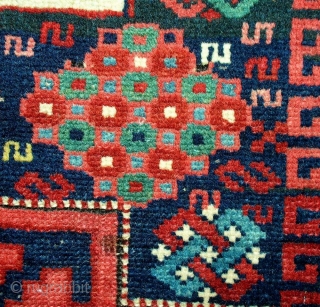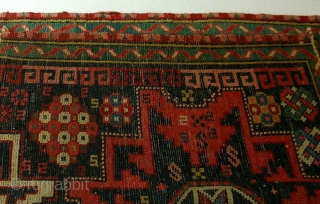Back
Daghestan rug fragment, ne Caucasus, late 19th century, cm 61x80.
What is that makes a Caucasian village rug really enjoyable in the end? Its colours. Better, the return the incoming light, reflected from the rug pile, has on our retina. In other words, not only the quality of dyes used for the wool, and their juxtaposition on the woven grid, but also the amount of lanoline in the wool and the thickness of pile itself play a key role. No need to tell how disappointing are certain village rugs – looking great from the pages of a sale catalogue (hallelujah Photoshop!) – when seen in flesh, due to their low, almost ghostly pile. Here we have a lucky combination of brilliant palette, superb wool, and unaware art, pasted all together onto a full pile fragment from a Daghestan rug. Additionally at an hilarious price…
price:
SOLD
- Home
- Antique Rugs by Region
- Category
- Profiles
- Post Items Free
- Albums
- Benaki Museum of Islamic Art
- Budapest: Ottoman Carpets
- Gulbenkian Museum
- Islamic Carpets. Brooklyn
- Islamic Textiles. Brooklyn
- Konya Museum: Rugs
- MKG, Hamburg
- MMA: Caucasian Carpets
- MMA: Mamluk Carpets
- MMA: Mughal Indian Carpets
- MMA: Ottoman Carpets
- MMA: Safavid Persian Carpets
- MMA: Turkmen Rugs
- McCoy Jones Kilims
- Ottoman textiles. Met
- Philadelphia Museum
- Rugs and Carpets: Berlin
- Seljuqs at the Met
- TIEM, Istanbul: Carpets
- V&A: Classical Carpets
- Vakiflar Carpets: Istanbul
- Baluch Rugs: Indianapolis
- Gallery Exhibitions
- Jaf an Exhibition
- Alberto Levi Gallery
- Andean Textile
- Christie's London: 2016
- Francesca Galloway
- HALI at 40
- ICOC Washington, DC 2018
- Jajims of the Shahsavan
- London Islamic Week April, 2018
- Mongolian Felts
- Navajo Rugs: JB Moore
- Persian Piled Weavings
- SF Tribal & Textile Art Show 2020
- SF Tribal 2019
- Sotheby's: C. Alexander
- Turkish Prayer Rugs
- Turkmen Main Carpets ICOC 2007











